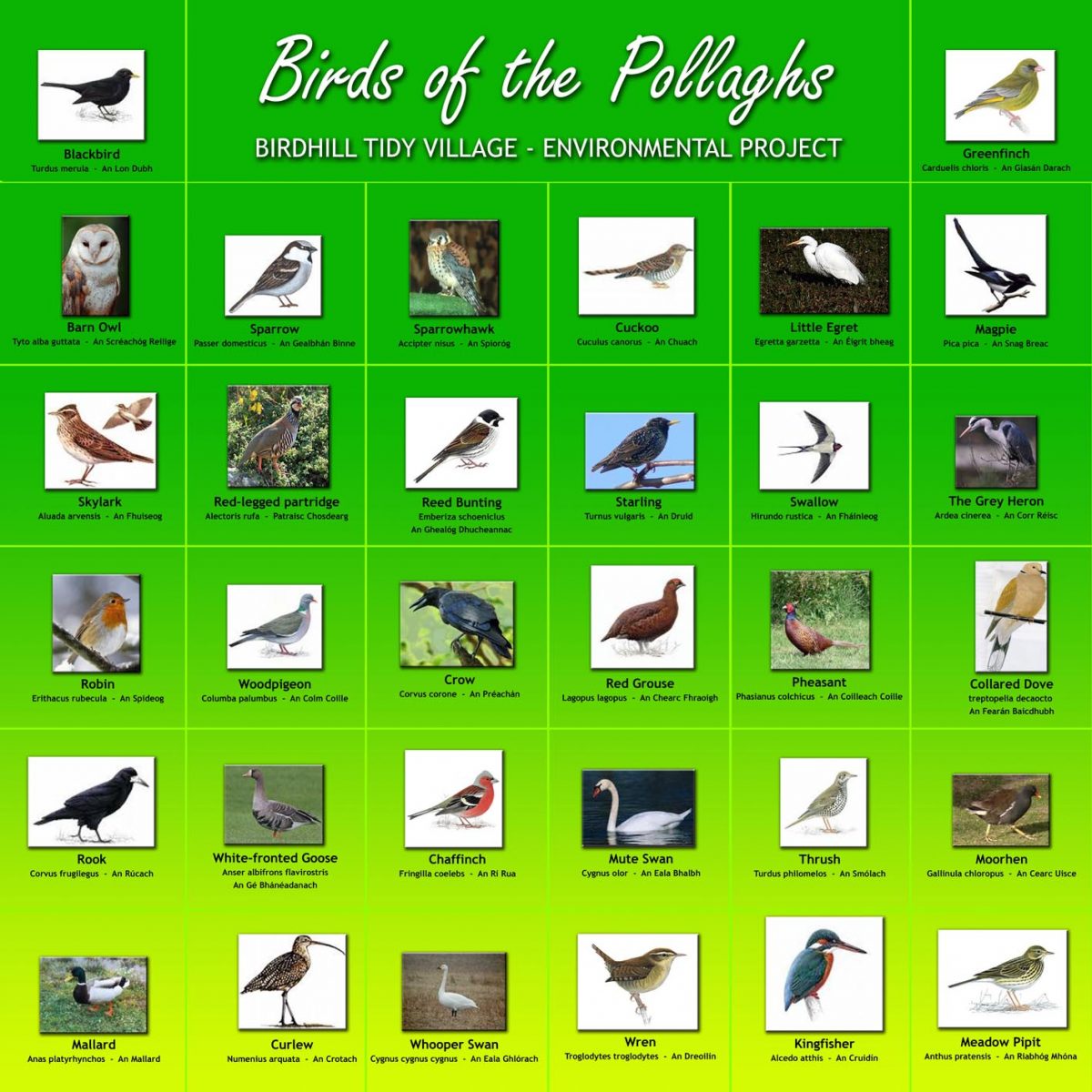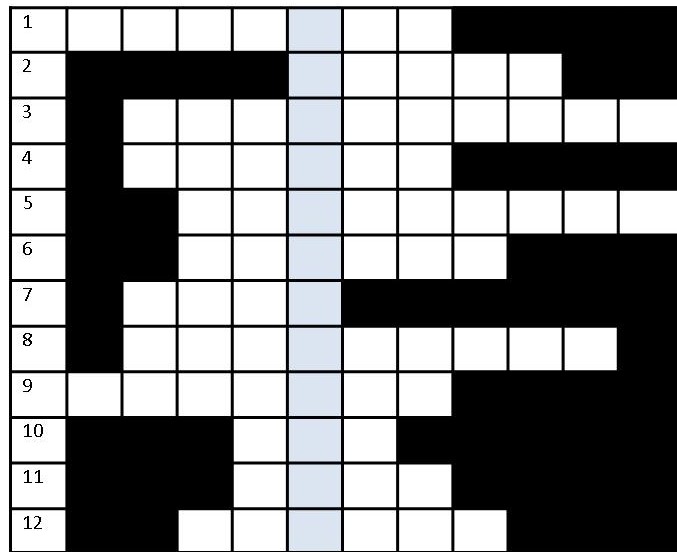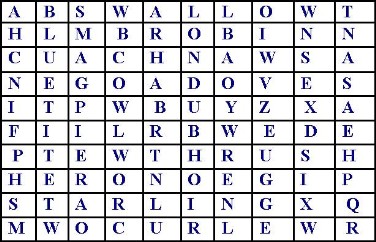
Children’s Crossword
.
CROSSWORD FOR CHILDREN
5 Information Boards have been erected in the Pollaghs giving details of the plants, mammals, birds, fish and insects of the area. Check them out to find the answers to the clues below and fill them into the grid. You will find an important phrase down the middle. When you have all the answers, enter the competition to win valuable book tokens.
Entries only through the Birdhill website (http://local.mobhaile.ie/birdhill).
Click on the ‘Contact Us’ button. Enter your email address and name. In the ‘Message’ space type in your 12 answers along with the phrase down the middle and then send. Closing date 15th June 2009.
1. Sounds like a very loud swan
2. The Irish name for this mammal is Madra Uisce (water dog)
3. Older people might call this iris by its Irish name ‘feileastram’
4. This tree is sometimes called the Sally
5. This bird’s Irish name means ‘red king’
6. This bird’s Latin name is ‘pica pica’
7. A type of elm tree found locally
8. The Orange-Tip is a type of _______
9. This fish found in the Kilmastulla River is protected by the EU Habitats Directive.
10. Daubenton’s is a kind of _______
11. Mustela Vison is not a welcome mammal in The Pollaghs
12. This fish returns from the Atlantic to the Kilmastulla River to spawn.

.
Birdsearch
In keeping with the bird theme, you are invited to find the names of 18 birds in this Wordsearch – 2 of the names are in Irish. All the birds are common in the Birdhill area. You can read up or down, left or right.
Entries only via the Birdhill Tidy Towns website. Go to the Contact Us button; enter your name in the Comment section followed by the names of all the birds you can find and then send.

Birdhill Birds
BirdWatch
Thanks to our householders who participated in the survey of local birds from December 2011 to February 2012, in conjunction with BirdWatch Ireland. The table below details the birds which most frequent our local gardens, each figure being a % of the total number of birds counted. The predominance of starlings was due to a large cloud of them (a murmuration or chattering) which was observed by one participant.

